
Townsville is a city on the north-eastern coast of Queensland, Australia. Townsville is Australia's largest urban centre north of the Sunshine Coast, with a population of 180,820 as of June 2018. Considered the unofficial capital of North Queensland by locals, Townsville hosts a significant number of governmental, community and major business administrative offices for the northern half of the state.

St James railway station is a heritage-listed underground commuter rail station that is located on the City Circle, at the northern end of Hyde Park in the Sydney central business district of New South Wales, Australia. It is served by Sydney Trains T2 Inner West & Leppington, T3 Bankstown & T8 Airport & South line services. It is named after the nearby St James' Church and provides a direct link to the Sydney Airport international and domestic railway stations. It was added to the New South Wales State Heritage Register on 2 April 1999.

RAF Bentley Priory was a non-flying Royal Air Force station near Stanmore in the London Borough of Harrow. It was the headquarters of Fighter Command in the Battle of Britain and throughout the Second World War. During the war, two enemy bombs destroyed a wooden hut near the married quarters, a blast from a V-1 flying bomb broke a few windows, the windows in the Officers' Mess were shattered by a V-2 rocket, and a Vickers Wellington crashed outside the Sergeants' Mess.

Townsville Airport is a major Australian regional airport that services the city of Townsville, Queensland. The airport is also known as Townsville International Airport, and Garbutt Airport, a reference to its location in the Townsville suburb of Garbutt. Townsville Airport is serviced by major Australian domestic and regional airlines, and in 2011/12 handled 1.7 million passengers making it the 11th busiest airport in Australia.

RAAF Base Townsville is a Royal Australian Air Force (RAAF) air base located in Garbutt, 2 nautical miles west of Townsville in Queensland, Australia. It is the headquarters for No. 1 Wing Australian Air Force Cadets and, along with Lavarack Barracks, establishes Townsville as a key military centre. The base's airfield is shared with the Townsville Airport.
Halifax Bay is a region located around a bay in the Coral Sea, situated on the Australian coast in Far North Queensland. It is bordered by the town of Ingham to the north, city of Townsville to the south and Great Palm Island off the coast to the east.

No. 3 Fighter Sector (3FS) was a Royal Australian Air Force (RAAF) unit formed at Townsville Grammar School, Townsville, Australia on 25 February 1942. No. 3FS was responsible for fighter aircraft control and coordination for the Townsville region. The Women's Auxiliary Australian Air Force members of 3FS were billeted at St Anne’s Girls School, Townsville.
No. 1 Wireless Unit RAAF was an Australian signals intelligence unit of World War II. The Unit was established on 25 April 1942.
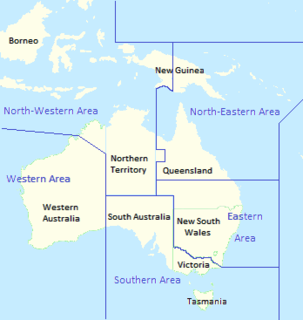
North-Eastern Area Command was one of several geographically based commands raised by the Royal Australian Air Force (RAAF) during World War II. For most of its existence it controlled units based in central and northern Queensland as well as Papua New Guinea. It was formed in January 1942 from the eastern part of the former Northern Area Command, which had covered all of northern Australia and Papua. Headquartered at Townsville, Queensland, North-Eastern Area Command's responsibilities included air defence, aerial reconnaissance and protection of the sea lanes within its territory. Its flying units, equipped with fighters, reconnaissance bombers, dive bombers and transports, took part in the battles of Rabaul, Port Moresby and Milne Bay in 1942, and the landings at Hollandia and Aitape in 1944.

West End is an inner suburb of Townsville in the City of Townsville, Queensland, Australia. In the 2016 census, West End had a population of 4,064 people.

Townsville is an electoral district of the Legislative Assembly in the Australian state of Queensland. The seat is one of four within the Townsville urban area in North Queensland, and covers the Eastern and Northern suburbs of the City of Townsville as well as Magnetic Island and Palm Island.
Riverway is a riverfront parkland attraction located in the Condon Suburb of Townsville that opened in July 2006. It stretches along 11 km (7 mi) of the Ross River, with areas at Pioneer Park, Loam Island, Apex Park and Ross Park at the Ross River Dam. The areas of Riverway that have been completed are Pioneer Park and Loam Island. Riverway is connected directly to the Thuringowa Central business district via a pathway along the foreshore.
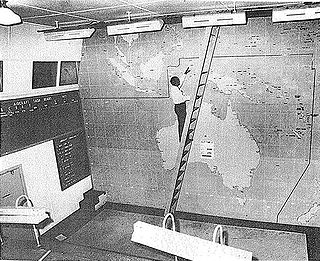
Bankstown Bunker, formerly known as Air Defence Headquarters Sydney, is a heritage-listed defunct Royal Australian Air Force (RAAF) operations facility, located on the corner of Marion and Edgar Street, in Condell Park, City of Canterbury-Bankstown, New South Wales, Australia. It was designed by Allied Works Council and built from 1943 to 1944 by Stuart Bros Pty Ltd of Sydney. It is also known as Air Defence Headquarters Ruin Sydney (former), No. 1 Fighter Section Headquarters, 1FSHQ, Bankstown Bunker and RAAF No. 1 Installation Bankstown; No. 101 Fighter Sector. It was added to the New South Wales State Heritage Register on 18 November 2011.

Breddan Aerodrome is a heritage-listed abandoned aerodrome at Gregory Developmental Road, Breddan, Charters Towers Region, Queensland, Australia. It is located 15 kilometres (9.3 mi) north of Charters Towers. It was built from 1942 to 1943 by Allied Works Council and Queensland Main Roads Commission. The airfield was constructed for the USAAF 38th Bomb Group in August 1942 as a satellite field for Charters Towers Airport, and later used by the Royal Australian Air Force (RAAF) during World War II as a maintenance base. Consisting of two runways, the airfield was abandoned after 1948. Today, the remains of the airfield consist of some deteriorating runways, taxiways and hardstands, mostly being reclaimed by grassland and shrub. No buildings have survived. It is also known as Breddan Airfield and Breddan WWII Aircraft Maintenance, Repair and Salvage Depot. It was added to the Queensland Heritage Register on 16 April 2010.

St Mary's Church & Convent are heritage-listed Roman Catholic church buildings at 34 Ingham Road, West End, City of Townsville, Queensland, Australia. It was designed by the Rooney Brothers and built by Cowell & Holt in 1888. It was added to the Queensland Heritage Register on 2 January 1993.
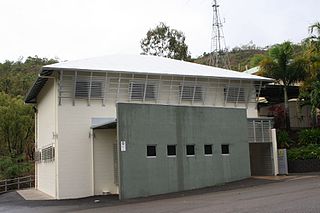
RAAF Operations Building Site is a heritage-listed command post at Green Street, West End, City of Townsville, Queensland, Australia. It was built in 1942. It was added to the Queensland Heritage Register on 7 February 2005.

Operations and Signals Bunker is a heritage-listed signal station off Stuart Drive, Wulguru, City of Townsville, Queensland, Australia. It was built from 1942 to 1944. It is also known as James Cook University, RAAF No.3 Fighter Sector Headquarters (3FSHQ), and Stuart Immigration Hostel. It was added to the Queensland Heritage Register on 28 August 1998.
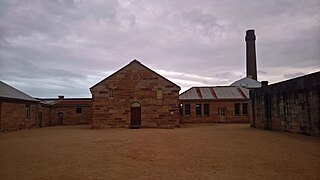
Prison Barracks Precinct is a heritage-listed prison precinct at Cockatoo Island, Sydney Harbour, New South Wales, Australia. It was added to the Australian Commonwealth Heritage List on 22 June 2004.

The Williamtown RAAF Base Group is a heritage-listed group of Royal Australian Air Force (RAAF) buildings and other items at RAAF Base Williamtown in New South Wales, Australia. It was added to the Australian Commonwealth Heritage List on 22 June 2004.
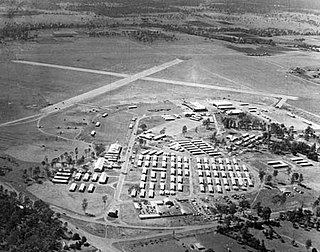
RAAF Base Amberley heritage structures is a heritage-listed military installation at RAAF Base Amberley on Southern Amberley Road, Amberley, Queensland, Australia. It was added to the Australian Commonwealth Heritage List on 22 June 2004.




















